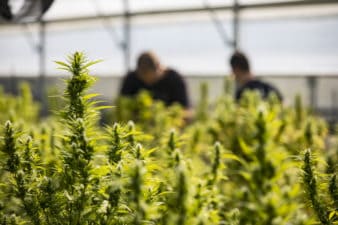Aurora Cannabis (TSX:ACB)(NYSE:ACB) has been a favourite of cannabis investors since 2016. Over the past three years, shares have increased in value by more than 3,000%.
Now with a market cap of $12 billion, Aurora is a cannabis giant. If you think that shares will continue higher, however, be cautious.
Here’s why now is not the time to buy stock in Aurora Cannabis.
No one is looking at oversupply
While analysts and investors are focused on revenue growth, few people are talking about potential supply gluts. The state of Oregon is a perfect example of what the Canadian market could look like in just a few years.
In 2014, the cultivation of cannabis for non-medicinal purposes was legalized in Oregon. In 2015, the governor signed an emergency bill allowing for the sale of recreational pot in dispensaries. The program didn’t even go into full effect until 2016.
Two years later, the market collapsed due to oversupply.
A few months ago, the Rolling Stone published that “Oregon has over one million pounds of excess weed,” resulting in “economic devastation” for hundreds of growers. Today, wholesale prices in Oregon remain some of the lowest in North America.
If you think the same thing won’t happen to Canadian producers, think again. Take a look at the production plans of Canada’s top growers. Keep in mind that many of these companies only started growing in 2018.
Cronos Group is ready to hit 100,000 kilograms in annual output.
Aphria will hit 115,000 kilograms of annual production next year, up from 30,000 kilograms this year.
Green Organic Dutchman Holdings wants to grow 65,000 kilograms of cannabis this year, despite growing less than 1,000 kilograms in January.
Aurora Cannabis wants to hit 700,000 kilograms of production by 2022. That should provide huge revenue opportunities, but if the companies above also hit their production targets, pricing will collapse. Once investors realize that profits may be hard to come by, cannabis stocks like Aurora could be crushed.
Funny money doesn’t last forever
Having an inflated market valuation allows you to do things that would otherwise be impossible, like raise $750 million, despite a lack of profitability. That’s exactly what Aurora did on April 3.
So far, Aurora has funded its growth by issuing additional stock at expensive price points. If investors turn on the stock, that source of funding would dry up quickly. Even worse, current shareholders could be massively diluted at discounted prices.
Thus far, Aurora hasn’t been held accountable for its rampant spending, which mostly depends on its ability to issue more and more shares. According to Business Insider, many investors have “complained that Aurora spent large amounts of money on numerous assets across the value chain, with perhaps little thought to which were best suited.”
Last quarter, Aurora failed to reach profitability yet again. Gross margins fell from 70% to 54%, contributing to a net loss of $238 million for the quarter, a shortfall that was made up for by, you guessed it, issuing more shares.
Today, Aurora is a business built on the value of its shares. If the market turns sour, things could get dicey overnight.
In total, oversupply concerns and sizable financing risks make Aurora a tough stock to buy.







